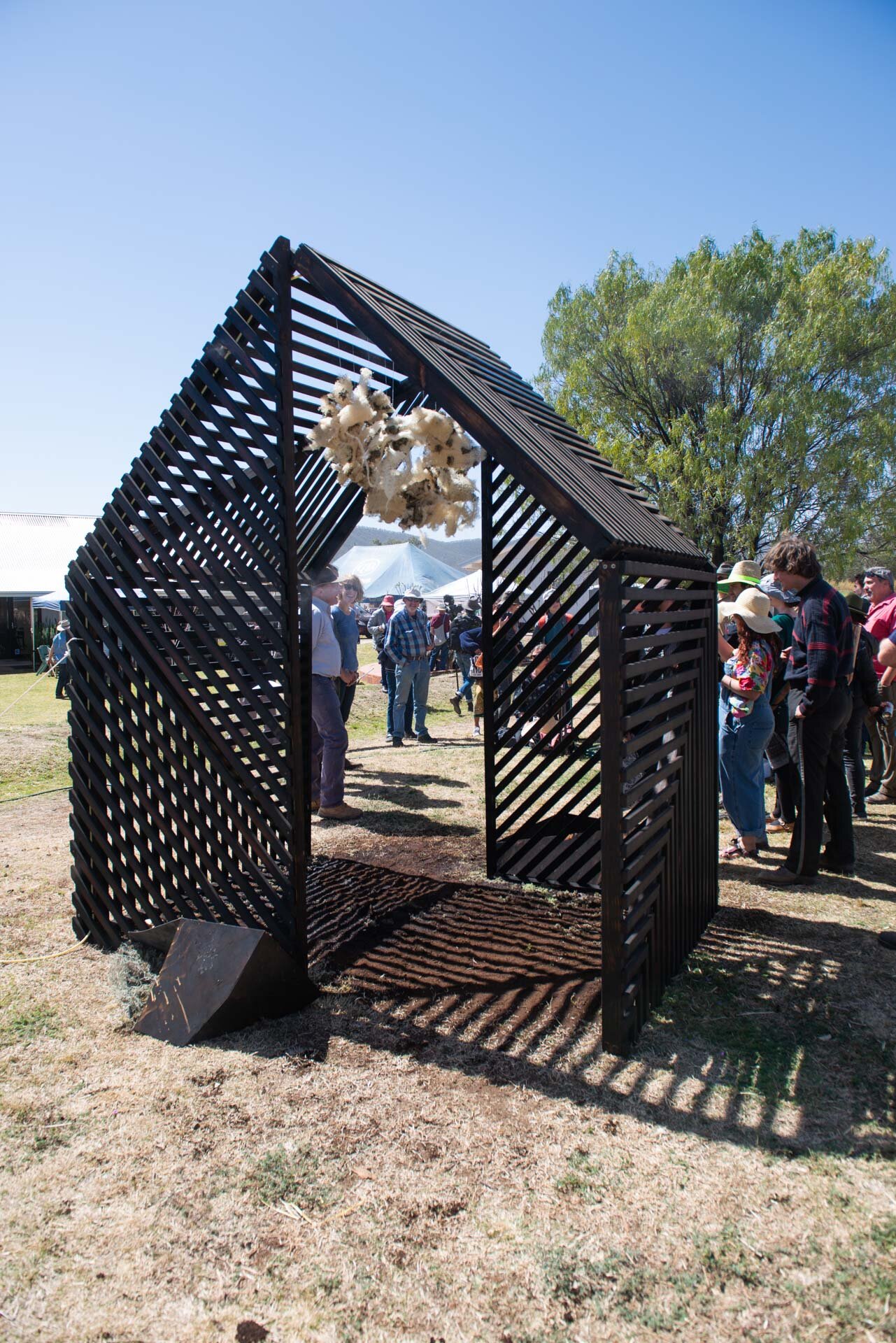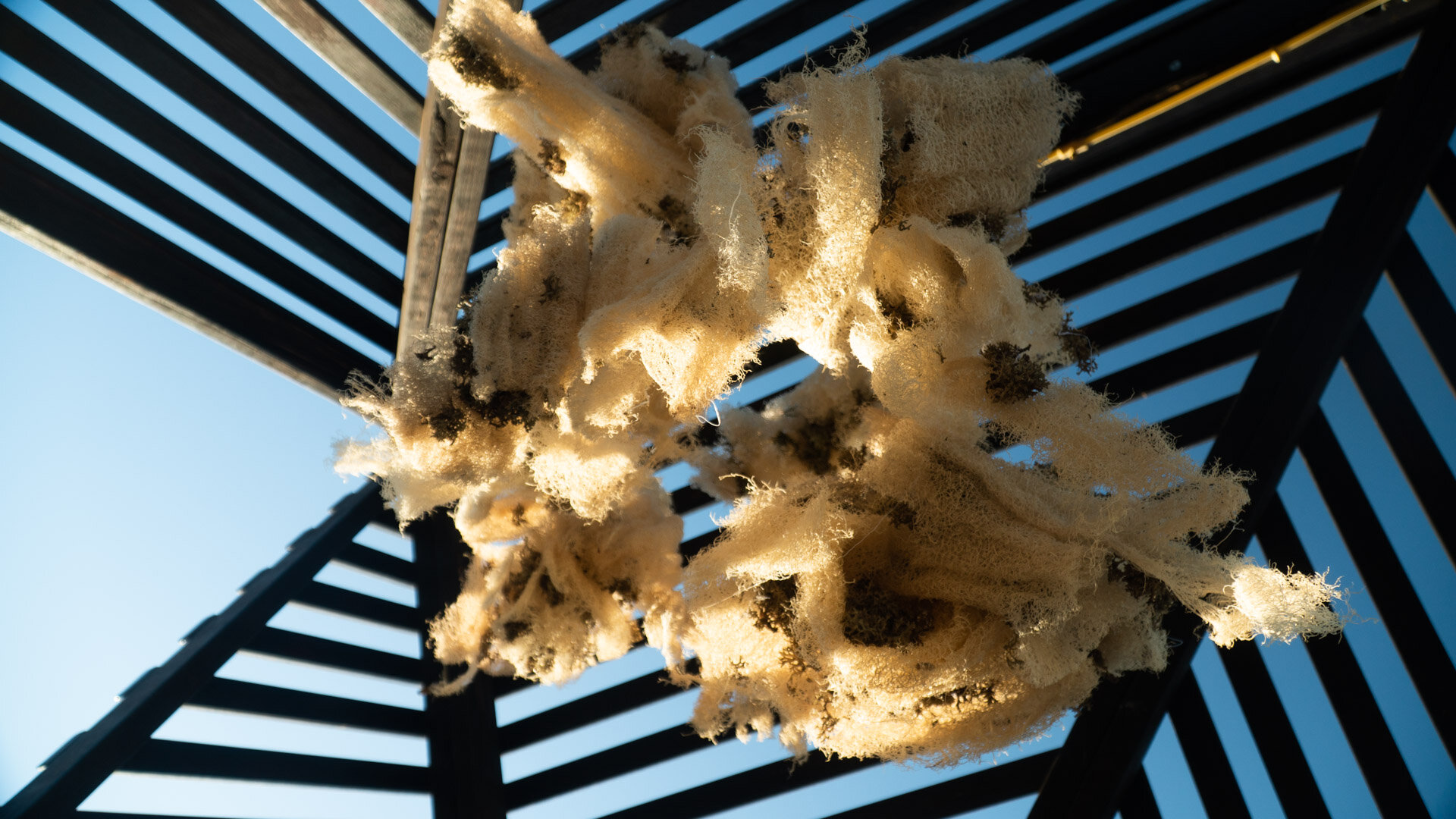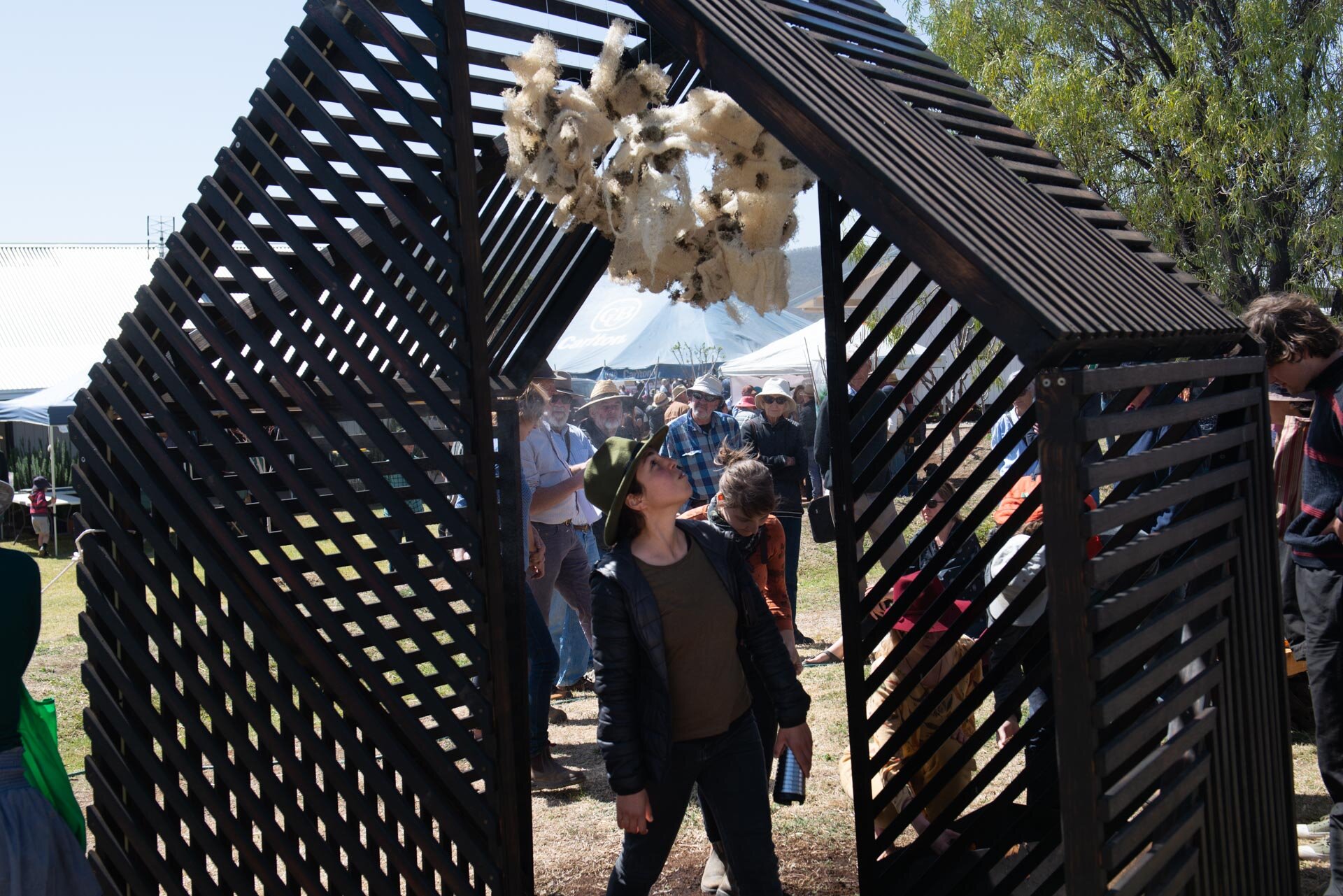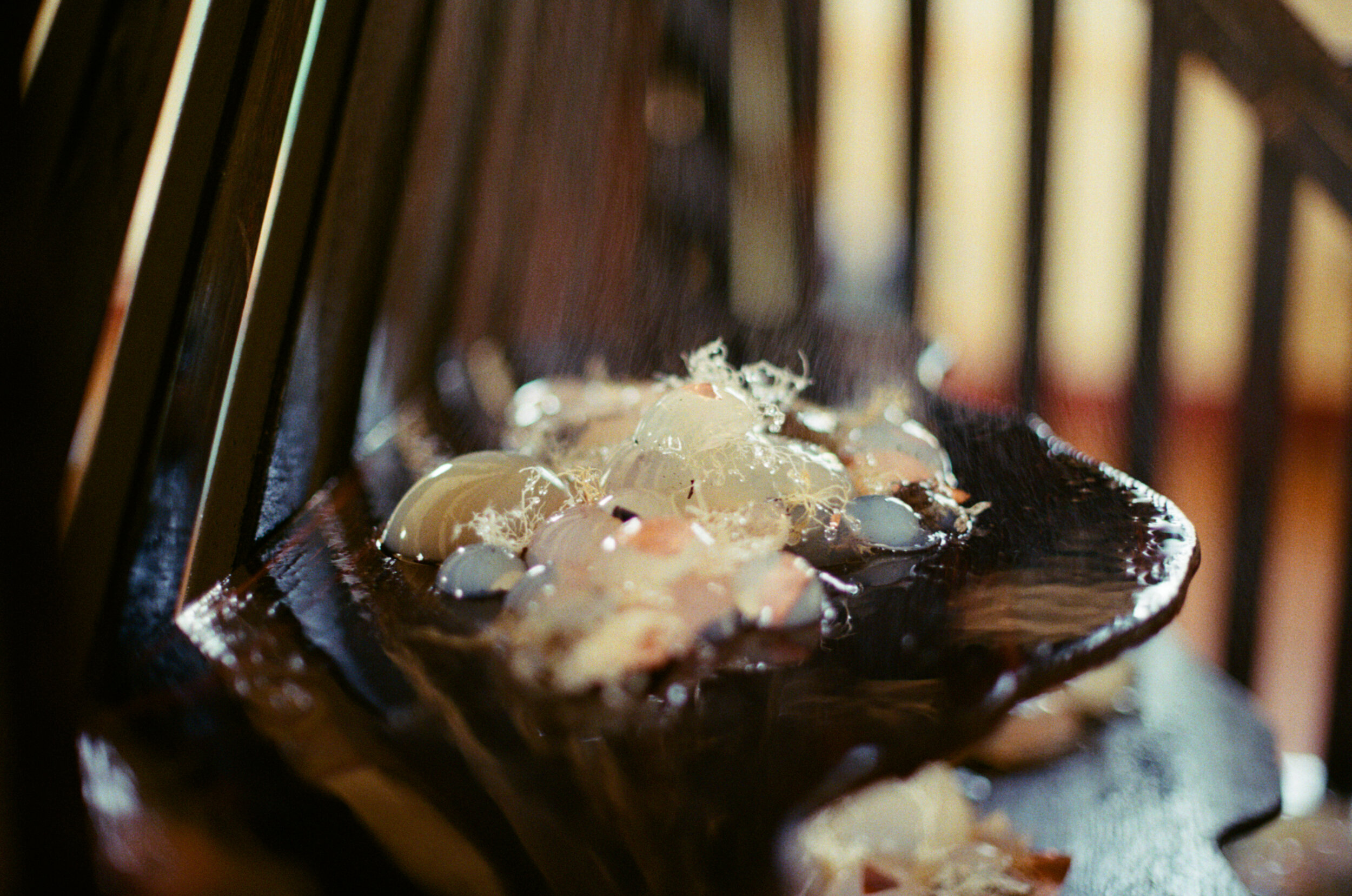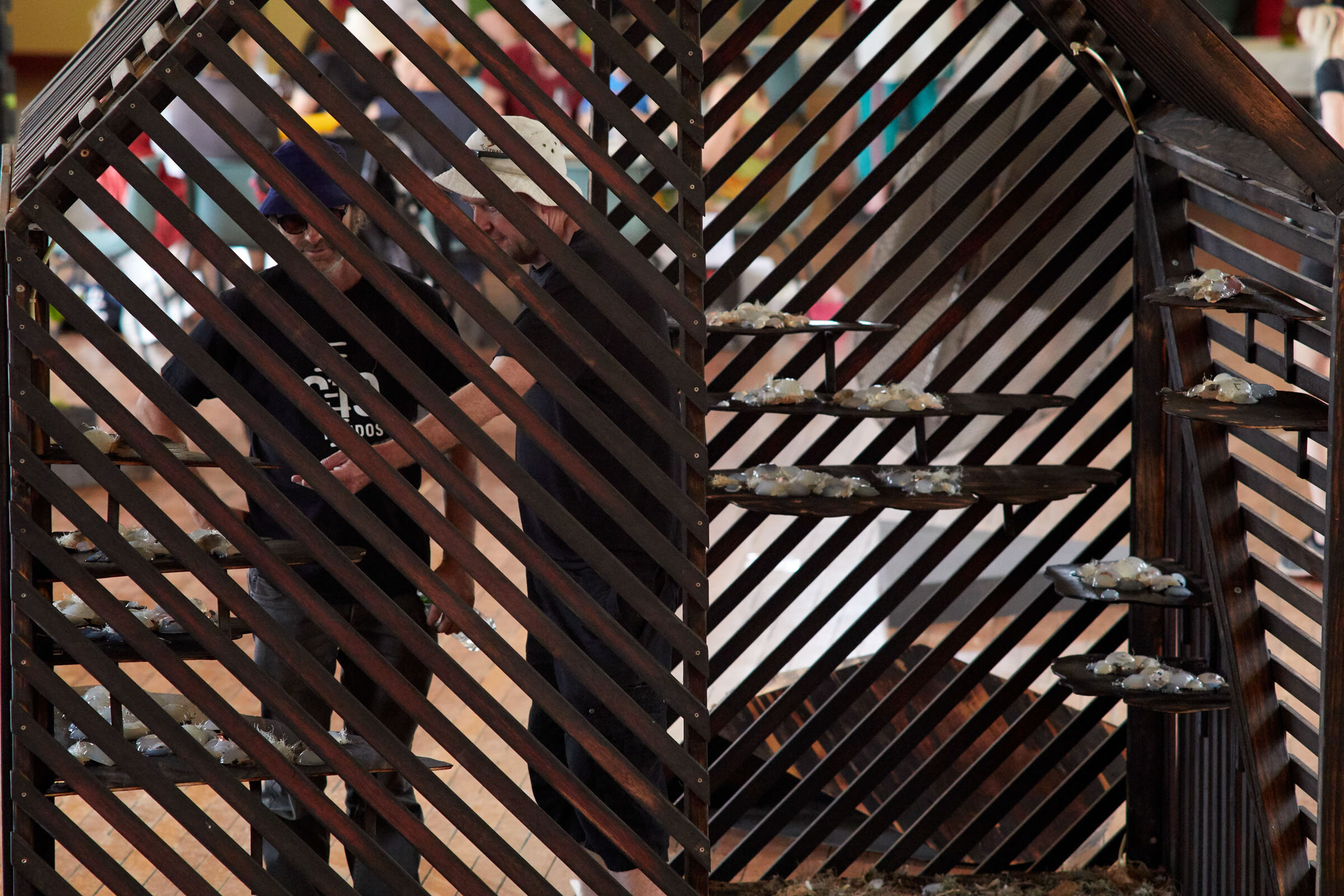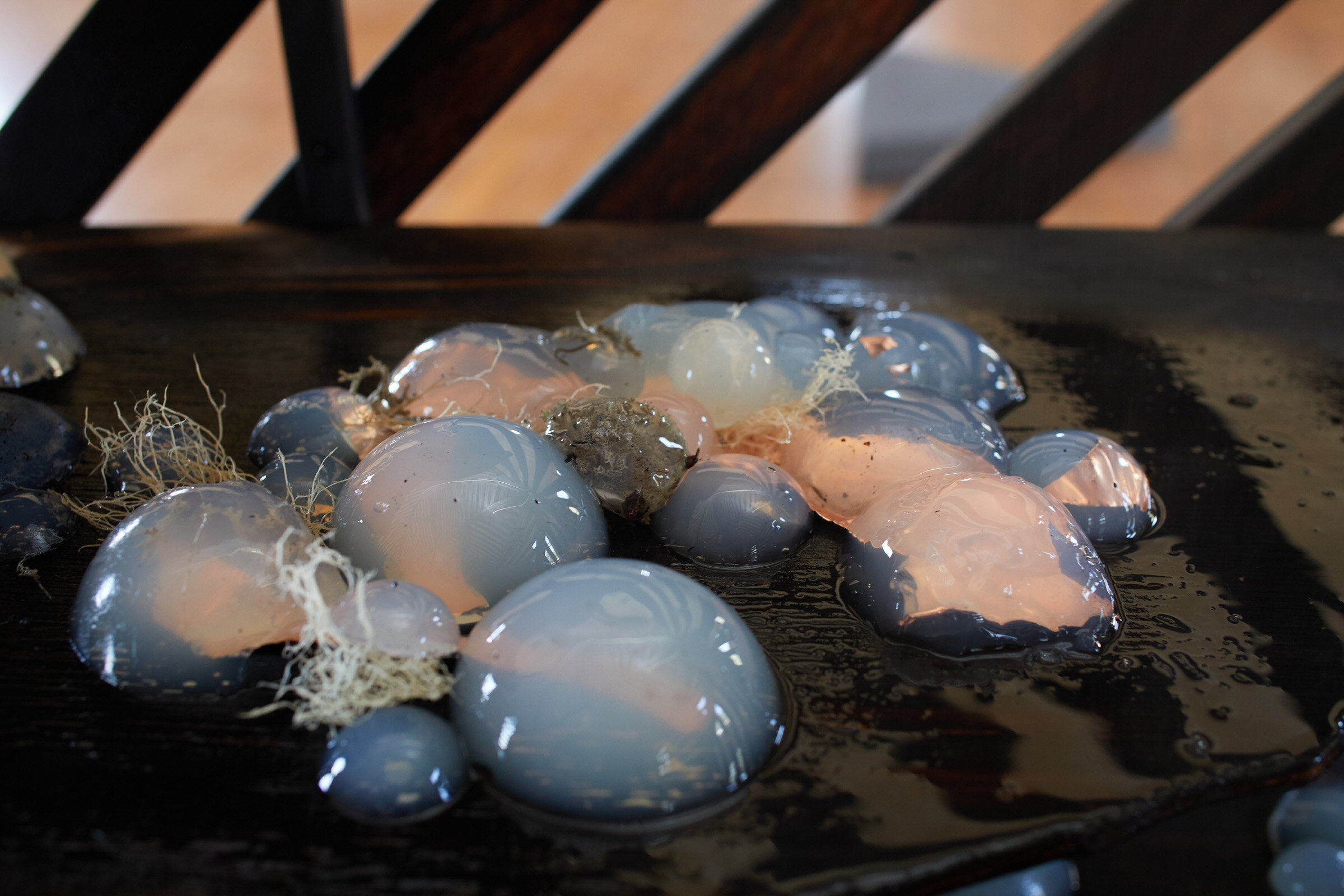By Laura Fisher
If we could trade places with a microbe in a healthy soil environment, what would it feel like? We would be immersed in a water-filled wonderland, surrounded by tiny living things feasting on carbon-rich exudates from plant roots and in return feeding those roots the minerals and nutrients that are essential to animal and human health. This is the world of humus.
In 2018, when the humus:human collaboration began, Jono, Glenn and I set out to explore the interdependence of humans and humus (read Glenn’s essay here for a refresher on what humus is). Somewhere along the journey we fixed on the idea of building a ‘house fit for a microbe’. Soil is not soil if it doesn’t have a structure within which organisms can dwell and do their thing. Whereas our earlier experiments, the modules and the lightboxes, were snapshots of aspects of humus, for the Groundswell event in September and Cementa in November we finally took the plunge and built a house.
We designed an open architectural structure large enough for people to walk in to, and built it with hardwood timber that we charred black. We were riffing on the beautiful Victorian bush houses we had discovered, and what we had learnt about the porosity of humus. We also introduced misters, which enveloped the structure in a misty vapour, and peat moss for the floor. With the spray we wanted to speak directly to the senses, to suggest the hydrated quality of humus. We had countless ideas for what we could display within to portray the properties of humus (including hollow viewing chambers made from rammed earth), but of course our limited budget ultimately decided what we could achieve.
An early model of the humus house produced by Jono showing the rammed earth columns we dreamed of making.
At the first event, we made bundles of lichen and loofah which hung in a big cluster from the apex roof. We’d fallen in love with both of these materials over the course of the project. Loofah fibres are entangled together in a robust web - if you happen to have one in your shower, take a moment to admire the way this plant has evolved to produce something so light and strong. We felt it was akin to the fungal webs that traverse humus, pumping nutrients between plant roots and soil organisms.
We collected the lichen from a very dry rocky slope on Laura’s property near Kandos. Lichens evolved from a symbiotic relationship between fungi and algae, and manage to get their nutrients by mineralising rocks. We noticed that with dewfall or rain this lichen would swell and soften to be an extremely strong, flexible material. When it was dry it would be wizened and brittle, in fact it would crunch to dust under our feet. We were in awe of its ability to rebound from such a vulnerable state, and its capacity to grow itself from scarce nutrients. So this gave us some more windows into the way humus behaves, particularly the way it cycles nutrients and gives soil a spongy structure that can hold vast amounts of water.
For Cementa we took a different approach. We created some shelves for the interior, and loaded them up with agar jelly ‘floccules’. These were a bit like which we’d first displayed at Siteworks, but this time they were clear, with fragments of copper, charcoal and other natural debris embedded within. The dripping water from the misters gave them a glistening luminosity that we really liked. Jono ahd I had been intoxicated by the idea of the spherical, gluey, solid-in-a-liquid image of humus floccules that Glenn painted in our minds, so this element paid tribute to the magic of this idea.
Humus is such a baffling substance to describe, and at Groundswell we got to stand beside the installation and use its components to tell the story (with Glenn of course doing the most to unpack what humus is) and answer questions from the audience. This was a great experience that perhaps best captured what the art/farming/science experience was all about for the three of us. Sadly Glenn couldn’t join us at Cementa.
We’re still not sure about what this installation really is - it certainly doesn’t stand up to tough scrutiny as a resolved artwork, or indeed a scientific model. In some ways it feels incomplete when Glenn’s impassioned statements about humus can’t be heard. It might now end up in a garden with plants growing in it, like the bush houses of the past. We would love to tour it around as an ‘outdoor classroom’, doing soil activities with students and constructing more illustrative components. We hope it will keep evolving.
Thanks to Vickie Zhang, Ian Hobbes and Alex Wisser for the photographs!



